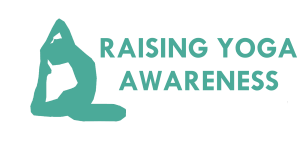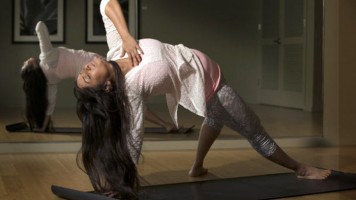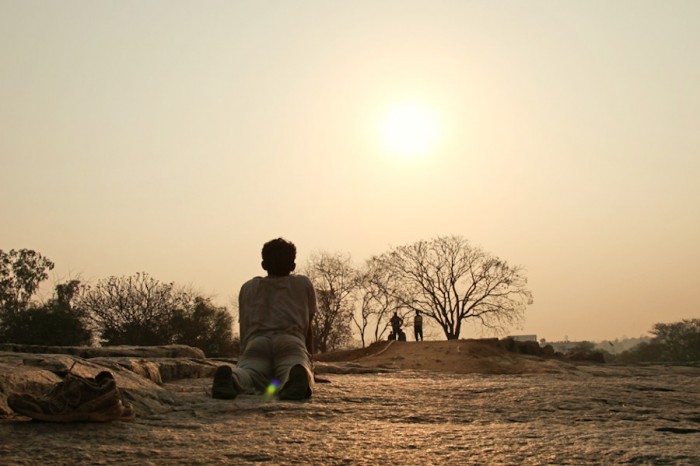Yoga is a universal language. It has no color or religion.
So why is the face of yoga in the U.S. always a thin flexible white American woman?
Is it that people of color and men don’t practice yoga? Or do they practice but don’t want to talk about it?
I was born and raised in India, where it’s common for two to three generations to live together under one roof.
Most kids grow up watching their parents, grandparents, aunts and uncles practicing meditation, breath work or chanting first thing in the morning. They also burn incense and light oil lamps to clear out negative energies from the night and welcome the new day (known as “Bhakti Yoga”). Many elders will visit the temple on their way to work each day, and feed the homeless sitting outside the temple (known as “Karma Yoga”). As the day progresses, the elders of the family spend time with the kids, narrating yogic mythological stories meant to be inspiring, soul-stirring, and rich with multiple layers of meaning (known as “Jnana Yoga”).
The physical practice of yoga (known as “Asana Yoga”) is similar to what we see in American yoga classes. Asana is traditionally performed mostly by men, with women participating more in group satsang (meditating on scriptures) and chanting — so it’s not surprising that most celebrated Indian yoga gurus are males.
For most Indians, yoga is not an exercise or something you do in a class. It is an entire lifestyle — a practice that is tied into many aspects of one’s daily routine.
When I moved to Chicago in 2004, my first experience of American yoga was overwhelming — in a good way.
When I inquired about yoga in the U.S. the first question was ‘well, what type of yoga you are looking for.’
“I’d stumbled into a multi-million dollar industry with no resemblance to the traditional yoga that I knew.”
The hot power studio I tried resembled a spa with fully equipped showers and supplies. The reception area had refreshments, comfy couches and Zen music. The yoga room had dim lights, with incense burning, an American singer named Krishna Das singing Indian Vedic chants on Pandora for a class full of beautiful women, wearing sleek yoga clothes which could easily pass off as club wear.
I was in awe. Here was this entire world of yoga that I didn’t even know existed. It was beyond fascinating and I was in love with every aspect of it.
In my first year of practice at multiple studios across the city, I must have taken over 200 group yoga classes. After a few months, I started noticing a few small things all these classes had in common, regardless of location, time, or style of studio. Ninety percent of the time I was the only person of color. I also noticed that barely five percent of the participants were male.
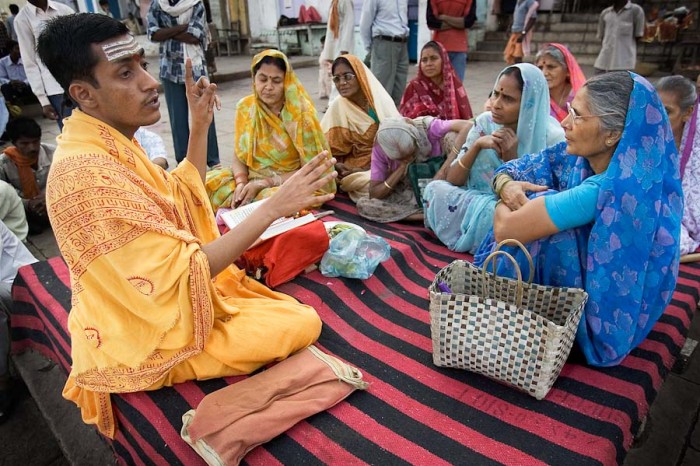
A priest in Varanasi leads women in a class on Hindu scripture. Traditionally in India women do more meditation and chanting, while the physical aspects of yoga are reserved for men. (Photo by Jorge Royan)
But maybe the most surprising difference was that the yoga practice was predominantly physical. It started with child’s pose and ended with shavasana.
I loved how physically demanding the hour was, but I missed the philosophical aspects of yoga. Somehow it felt incomplete. When there were small bits of chanting in Sanskrit introduced, I wondered whether the students or the teachers really understood what the chants meant or why they were doing them.
After a year of dedicated practice, I joined a 200 hour level 1 certification at a local studio in Chicago. The training was a life-changing experience for me at many levels.
The more I learned about yoga, the more I realized that how many things that I had experienced growing up in India were a part of it — I just hadn’t know that it was called yoga.
I looked forward to the asana training days. I enjoyed learning about the anatomy and benefits. But the sessions on Sanskrit, history of yoga and philosophy were very disappointing. The teachers were not experts in this aspect of yoga, and most of what they taught seemed to be fresh from a google search.
Worse yet, as the training progressed, I learned that even though I considered myself an American now, I wasn’t perceived as one. Anytime I raised a question about something I didn’t think was being presented correctly, or if I wanted to assist the class to provide a correct pronunciation of Sanskrit chants or words, it was treated as an unwelcome interruption.
For example; during one of the yoga philosophy sessions, the teacher summed up the Bhagavad Gita (Hindu equivalent to the Bible) in one sentence “Arjuna killed his brothers to follow his Dharma (which means duty in Sanskrit)”.
When I raised my concern that this was a vast oversimplification and that the students deserved more context, I was immediately shut down for the lack of time.
Some fellow students caught me after class and reassured me that they appreciated my contribution and a few of us met after training hours and talked in detail about the content and context of the Hindu scriptures.
This incident upset me at some level, but the love for yoga and affection of other students kept me in the program.
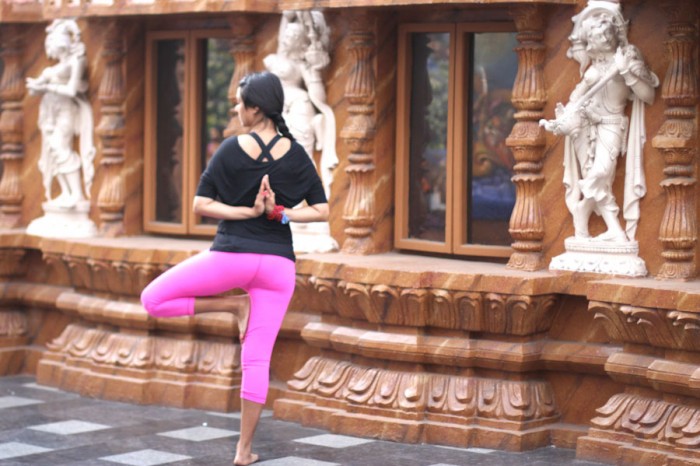
The author, Sweta Saraogi, in Vriksasana, or tree pose, at a temple in Hyderabad, India. (Courtesy photo)
But the problems continued. Toward the end of my two months of training my mentor told me that if I wanted to be a teacher, I needed to change my intensity towards yoga. She suggested I should be more causal and peppy (sort of a cheerleader when leading a group class). When I didn’t understand what she was trying to say, she put it more bluntly:
“Sweta, when you walk in a yoga studio, people perceive you as an authority on yoga. You need to focus more on making the physical asanas fun, and less on the philosophy.”
It was the first time someone had reminded me that, as a person of color teaching yoga, I was going to be perceived differently.
I tried not to take it to heart. Overall, the training had connected me to my roots and I had found my purpose. All I wanted to do was to share the gifts of yoga.
So I started teaching at studios, and over the course of one year I had built up an amazing following of students which included a few men and people of color.
My classes were tailored to provide a holistic yoga experience. It included yoga philosophy in the form of storytelling and the asanas that stemmed from that philosophy. It included details on why the physical yoga positions are named what they are, and how we are meant to connect with them to improve our physical and mental well-being.
It was not a religious practice. I just wanted to share the knowledge and provide an avenue for students interested in the broader aspects of yoga. Some of the students said that when they came to my classes to practice yoga, they felt immediately transported to India, even if they’d never left the U.S.
But the management of the yoga studios were not really happy with my approach. I often got feedback from them that I should focus more on the asanas and the physical aspects.
This conflict got me thinking what yoga truly is.
The questions took me back to Northern India, where I travelled for months, living the ashram life, learning more about traditional yoga and working to understanding yoga philosophy.
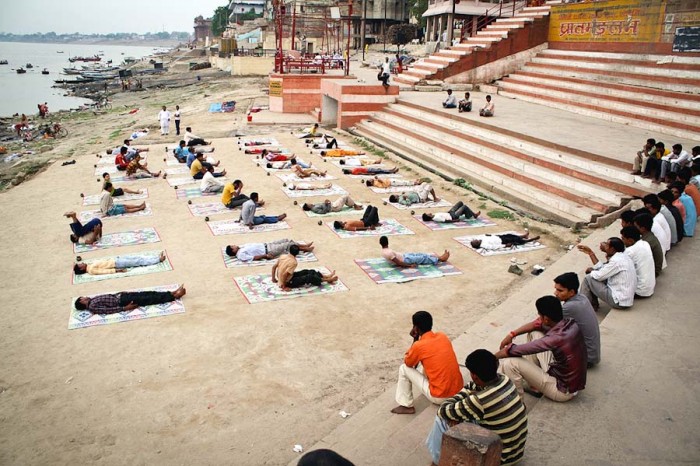
An early morning yoga class on the banks of the Ganges in Varanasi, India. (Photo by Nakatani Yoshifumi)
When I came back to the U.S., I decided to approach some of the more “authentic studios” with the idea of teaching classes geared more toward yoga philosophy.
Some of them balked, warning me that it would sound like I was preaching Hinduism. I’d already been to several authentic yoga studios and have seen them talk philosophy and bring the holistic aspects of yoga to the class. So why was I shut down? Was it my color that made the yoga studios react the way they did? Or are Americans really only interested in the physical asana practice?
When I moved to Seattle earlier this year, I had similar interactions. Even though Seattle has a much larger yoga community, I noticed the same type of demographics in the yoga studios. And the majority of studios were still only interested in the physical aspects of yoga.
So, inspired by the start-up culture in Seattle, I decided to launch a private practice that catered to individuals who want to learn and practice the broader aspects of yoga. This is my way of raising a broader awareness of yoga, and of creating a safe space where everyone feels welcome, irrespective of color, background, age or physical fitness level.
My students now include men and women of all shapes and sizes from all over the world. Most of them are people who prefer not to practice at a regular yoga studio because they feel intimidated in the environment of super flexible and highly athletic yogis, or don’t enjoy the practice just because of its intensity of physical postures.
Someone asked me the other day as to why don’t I focus on teaching yoga to the Indian-Americans in Seattle. Wouldn’t they appreciate it more?
My answer was, why should I limit myself? From my experiences, I have learned something important: that yoga is a universal language. Anyone who is dedicated to yoga and has a consistent practice will reap the benefits, which have nothing to do with color, age or gender.
“America has done a great job of bringing yoga alive. No other country, including India, has embraced yoga to this extent.”
But why is American yoga mainly limited to the physical asanas? Why is the discussion of yoga philosophy limited to a small number of studios? Why is the face of yoga always thin white American women doing the craziest yoga poses? Why don’t we ever see pictures of men, women of color, and students enjoying mediation or breath work?
Are we creating an environment where others don’t feel welcome or feel intimidated?
Yoga should not be limited to individuals who were born flexible. Quite the opposite! Those who find the physical aspects of yoga the hardest are the ones who benefit from it most. What can we do to make them feel more welcome?
In my opinion, by sharing the broader aspects of yoga like Bhakti Yoga, Jnana Yoga and Karma Yoga, we can transform the image of yoga from what it is today — a competitive sport — to a holistic path of self-realization, and thus open the door to people of varied demographics to practice yoga.
This article was first published on The Seattle Globalist
